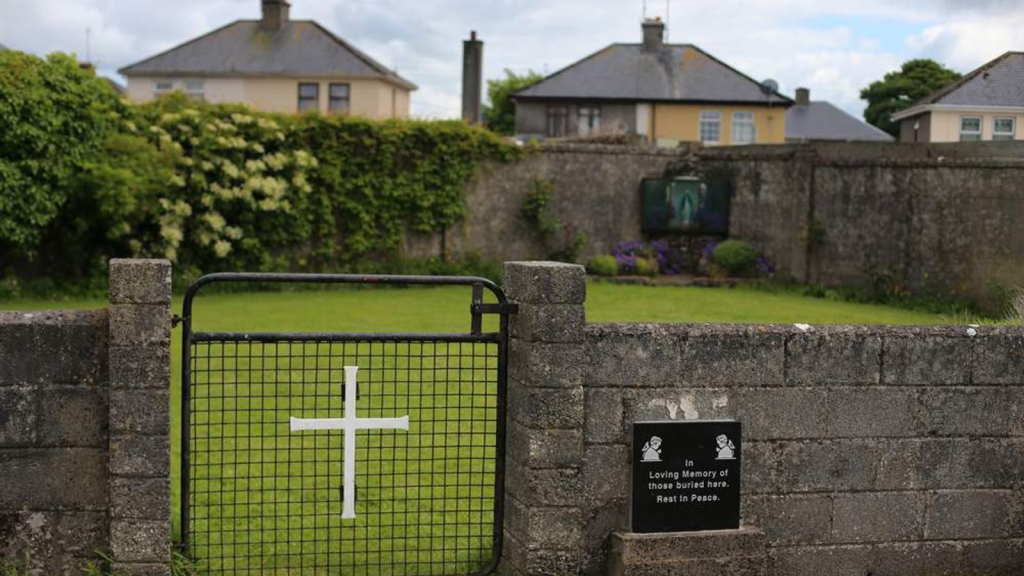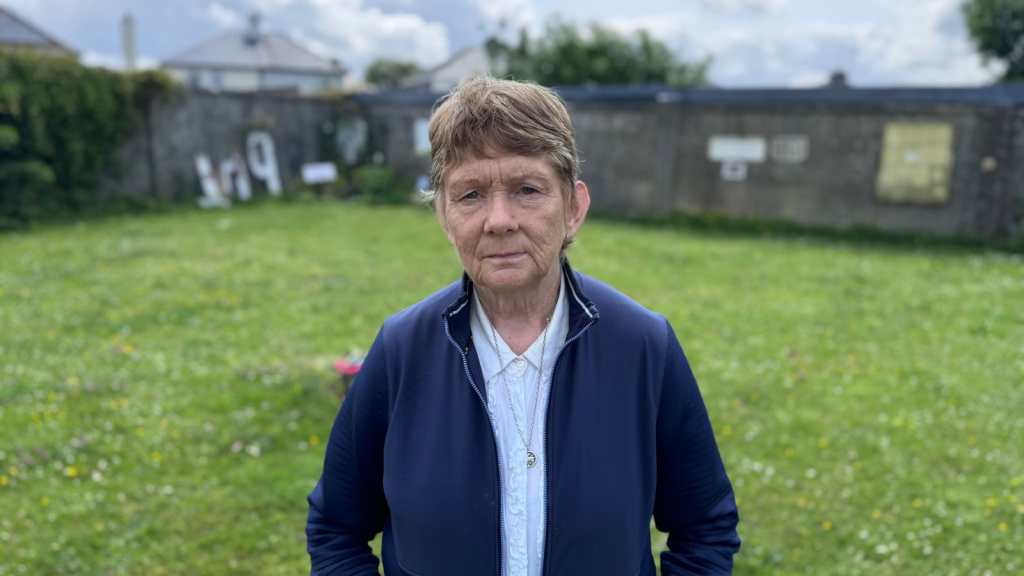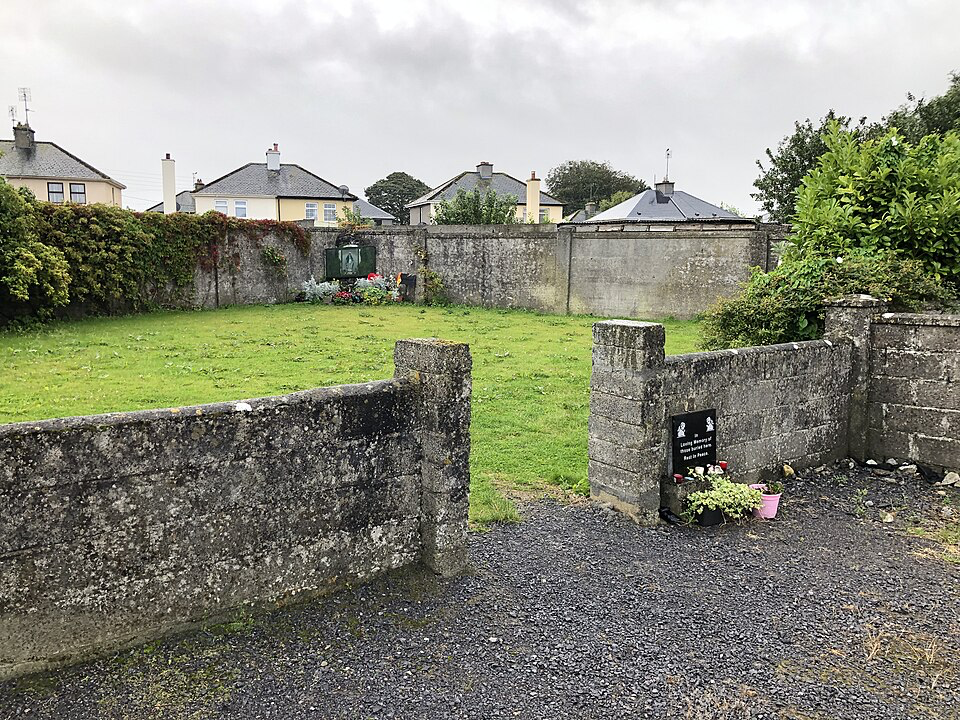The memorial garden in Tuam looks peaceful from the street, with neat grass and quiet housing that suggests nothing of the tragedy beneath. Yet this week, workers began sealing off the site where investigators believe nearly 800 children are buried.
Forensic teams are beginning Ireland’s most extensive excavation to recover the remains of babies and toddlers who died at the former Bon Secours Mother and Baby Home between 1925 and 1961. Many were placed in what was once a sewage system, in conditions that would shock even by the standards of that era.

The search through underground chambers is expected to take two years. Each discovery matters to families who’ve waited generations for answers.
Ireland’s Hidden Institution System
Mother and baby homes operated across Ireland for most of the 20th century, housing unmarried pregnant women away from public view. The Catholic Church ran most of these facilities, reflecting the moral attitudes of the time toward women who became pregnant outside marriage.
These institutions bore little resemblance to modern hospitals or care facilities, operating more like punishment centers. Women arrived pregnant and ashamed, then worked through their pregnancies before giving birth and facing separation from their children within months. Society demanded these “problems” be hidden away, and these facilities served exactly that purpose.
The Tuam facility housed thousands of women and children during its 36-year operation, with infant mortality rates that were extremely high. Until recently, however, few people questioned what happened to all those who died there.
The broader system stretched across Ireland. Between 1922 and 1998, an estimated 90,000 women passed through these institutions, where 9,000 children died from disease, malnutrition, and neglect.
The Research That Changed Everything
Catherine Corless, a retired teacher turned local historian, was simply researching her hometown’s past when she stumbled upon Ireland’s darkest secret.

In 2014, the Tuam resident began tracking down old death certificates. Those records showed that 798 children had died at the Tuam home over those years. But when Corless searched for burial records, she could only locate documentation for two children. The rest seemed to have vanished from official records entirely.
Corless spent months tracking leads and speaking to elderly residents. Some recalled evening burials away from public attention, though local whispers had lasted for years without anyone grasping the full scope.
Her persistence eventually led investigators to make a devastating discovery. A ground-penetrating radar revealed an underground structure containing significant amounts of human remains. The victims ranged in age from 35 weeks gestation to three years old.
Read More: Leaked Video Allegedly Shows Air India Plane Losing Power Before Crash: ‘Nothing Is Working’
One Family’s Generations of Pain
Annette McKay has carried her family’s grief for seven decades. When her mother, Margaret O’Connor, was just 17, someone sexually assaulted her and she became pregnant. Authorities sent her to Tuam to give birth in 1942, far from home.
Margaret’s daughter, Mary Margaret, lived for six months before dying at the home. The way Margaret learned of her child’s death stayed with her forever. “A nun approached her while she hung washing and said, ‘the child of your sin is dead,'” Annette told reporters, recalling her mother’s account.
Margaret died never knowing where they buried her baby, carrying that uncertainty and grief to her grave. Now Annette, at 71 and living in Manchester, hopes the excavation might finally provide the answers her mother never received.
Ireland’s system deliberately punished these women and their children. “We locked up victims of sexual assault, we locked up victims of incest,” Annette explains. “We put them in laundries, we took their children, and we just handed them over to the Church to do what they wanted.”
For Annette, finding even fragments of her sister’s remains would mean everything. She wants to bury Mary Margaret alongside their mother, finally reuniting them after eight decades apart. “I don’t care if it’s a thimbleful for me to be able to pop Mary Margaret with Maggie.”
The Careful Work of Recovery
The weight of recovering nearly 800 children falls to forensic archaeologist Daniel MacSweeney and his team. This sensitive excavation presents challenges that go far beyond typical archaeological digs. They’re dealing with the remains of very young victims, scattered across multiple underground chambers, after years of deterioration.
DNA testing will be essential for identifying individual children, but that process depends on finding living relatives willing to provide samples. Some families don’t know they had connections to Tuam. Others may prefer not to revisit painful family histories.
The team plans to catalog every fragment they recover. Children they can identify will be returned to their families for proper burial. Those who remain nameless will receive dignified reburials with their existence finally acknowledged.
MacSweeney’s team has experience with complex excavations, but the emotional weight of this project sets it apart. They’re trying to restore dignity to children who were denied it in life and death.
Ireland Confronts Its Past
This excavation represents more than recovering remains. It’s part of Ireland’s larger reckoning with how it treated vulnerable women and children throughout the 20th century. A government commission found that 9,000 children died across 18 different mother and baby homes nationwide.
Ireland systematically failed vulnerable women and children for generations, operating some facilities until 1998. In 2021, the Irish government formally apologized and acknowledged the state’s role in perpetuating a system that caused immense suffering. The Bon Secours sisters who ran Tuam have also issued an apology.

But apologies can’t undo trauma or bring back the dead. For survivors and families like Annette’s, the excavation provides something more tangible: recognition that their loved ones’ lives mattered.
The work in Tuam will likely raise as many questions as it answers. Irish Prime Minister Micheal Martin calls it “a very difficult, harrowing story and situation.” The excavation will be respectful to both the dead and the living who still carry these wounds.
After years of silence, investigators work to find and remember every child whose story can finally be told.
Read More: Man Discovers Air India Crash Survivor Sat in Same Seat He Once Survived Another Disaster In

